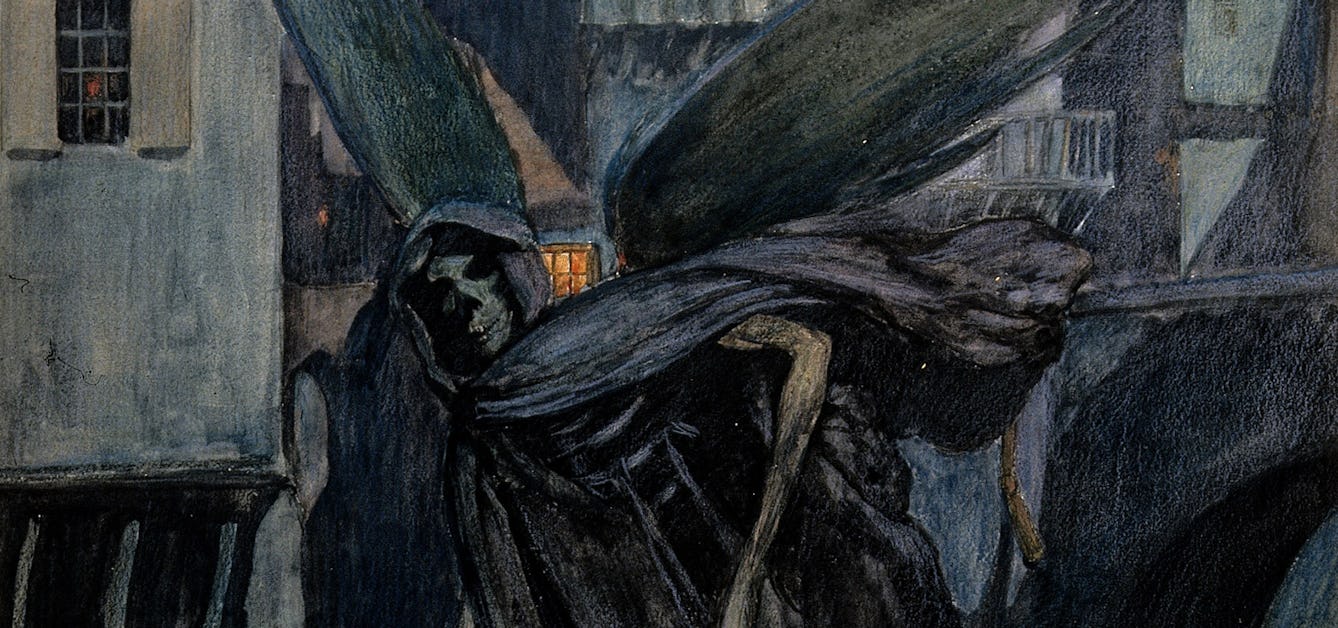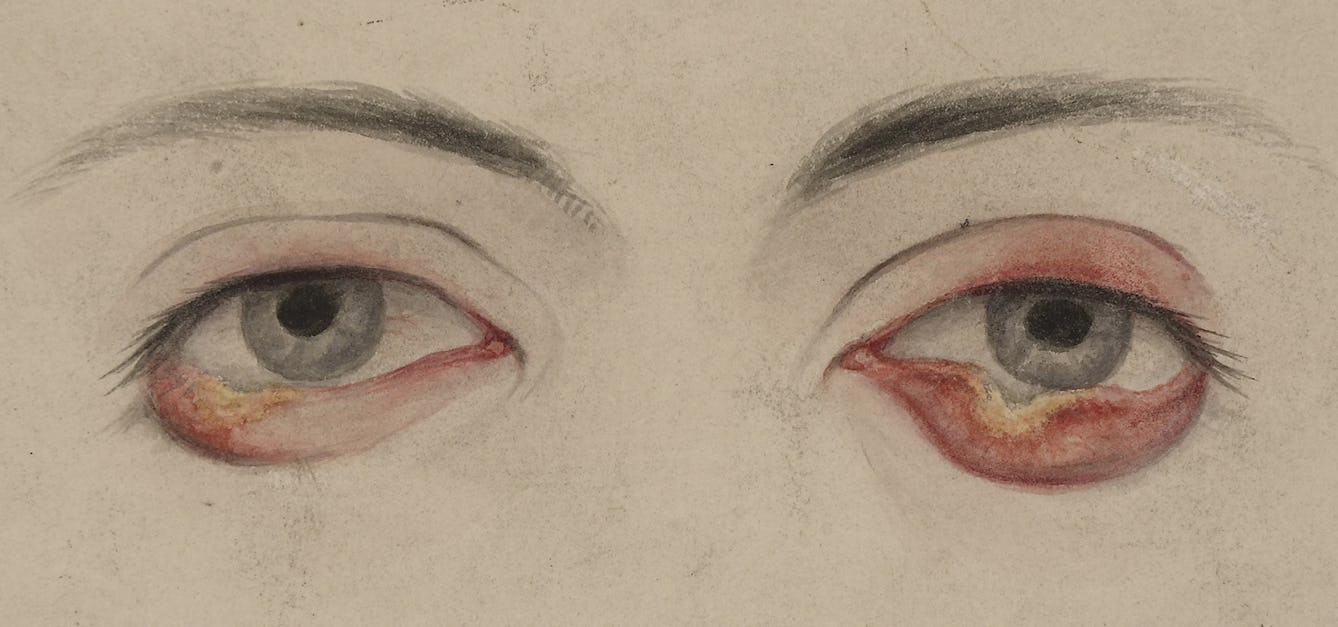Stories

- Article
My mother, and metaphors of a pandemic
A pandemic. Two members of one family, living thousands of miles apart. And months of calls and messages that helped them grow closer.

- Article
The cook who became a pariah
New York, 1907. Mary Mallon spreads infection, unaware that her name will one day become synonymous with typhoid.

- Article
We need less ‘sickle cell warriors’ and more allies
Rejecting the epithet “warrior”, Cheryl Telfer describes the pervasive effect sickle cell disease has on her life, and calls for more people to donate blood to help sicklers.

- Article
The prostitute whose pox inspired feminists
Fitzrovia, 1875. A woman recorded only as A.G. enters hospital and is diagnosed with syphilis.
Catalogue
- Archives and manuscripts
Insects as carriers of disease GHF Nuttall 1899
Date: 1899-1934Reference: PP/FPW/B.169/1Part of: Parkes Weber, Frederick (1863-1962)- Books
A historical note upon diptera as carriers of disease : Paré, Déclat / by Howard A. Kelly.
Kelly, Howard A. (Howard Atwood), 1858-1943.Date: 1901- Audio
Animals that changed the world : disease carriers.
Date: 2000
- Pictures
The tiger mosquito and the grey 'night-biting' mosquito as carriers of disease (dengue, yellow fever and filaria); advising citizens to clean up water-holding rubbish. Colour lithograph, ca. 1928.
Brisbane (Qld.). City Council. Department of Health.Date: [1928?]Reference: 562405i- Books
Notes on some Indian species of the genus Phlebotomus. Part XI, The rôle of insects of the genus Phlebotomus as carriers of disease, with special reference to India / by J.A. Sinton.
Sinton, J. A. (John Alexander), 1884-1956.Date: [1925]




![Pulsatilla vulgaris Mill. Ranunculaceae Distribution: Europe. Lindley (1838) and Woodville (1790) knew this as Anemone pulsatilla, the common name being Pasque (Easter) Flower. At the end of the 18th century it was recommended for blindness, cataracts, syphilis, strokes and much more, treatments which, as was clear to physicians at the time, were valueless. Gerard (1633) writes: ‘They serve only for the adorning of gardens and garlands, being floures of great beauty’. It is in the buttercup family, Ranunculaceae, all members of which are poisonous. It was recommended, by mouth, for ‘obstinate case of taenia’ (tapeworms). One hopes it was more toxic to the worm than the patient. Flowers with a central disc and radiating florets were regarded as being good for eye complaints under the Doctrine of Signatures. Porta (1588) writes (translated): ‘Argemone [Papaver argemone], and anemone, have flowers of this shape, from this they cure ulcers and cloudiness of the cornea’. There were occupational diseases even before there were words like pneumoconiosis, and Lindley writes that ‘the powder of the root causes itching of the eyes, colic and vomiting, if in pulverising it the operator do not avoid the fine dust which is driven up.’ Photographed in the Medicinal Garden of the Royal College of Physicians, London.](https://iiif.wellcomecollection.org/image/B0009141/full/282%2C/0/default.jpg)
![Pulsatilla vulgaris Mill. Ranunculaceae. Pasque flower. Distribution: Europe. Lindley (1838) and Woodville (1790) knew this as Anemone pulsatilla, the common name being Pasque (Easter) Flower. At the end of the 18th century it was recommended for blindness, cataracts, syphilis, strokes and much more, treatments which, as was clear to physicians at the time, were valueless. Gerard (1633) writes: ‘They serve only for the adorning of gardens and garlands, being floures of great beauty’. It is in the buttercup family, Ranunculaceae, all members of which are poisonous. It was recommended, by mouth, for ‘obstinate case of taenia’ (tapeworms). One hopes it was more toxic to the worm than the patient. Flowers with a central disc and radiating florets were regarded as being good for eye complaints under the Doctrine of Signatures. Porta (1588) writes (translated): ‘Argemone [Papaver argemone], and anemone, have flowers of this shape, from this they cure ulcers and cloudiness of the cornea’. There were occupational diseases even before there were words like pneumoconiosis, and Lindley writes that ‘the powder of the root causes itching of the eyes, colic and vomiting, if in pulverising it the operator do not avoid the fine dust which is driven up.’ Photographed in the Medicinal Garden of the Royal College of Physicians, London.](https://iiif.wellcomecollection.org/image/B0009140/full/600%2C/0/default.jpg)
![Pulsatilla vulgaris Mill. Ranunculaceae Pasque flower. Distribution: Europe. Lindley (1838) and Woodville (1790) knew this as Anemone pulsatilla, the common name being Pasque (Easter) Flower. At the end of the 18th century it was recommended for blindness, cataracts, syphilis, strokes and much more, treatments which, as was clear to physicians at the time, were valueless. Gerard (1633) writes: ‘They serve only for the adorning of gardens and garlands, being floures of great beauty’. It is in the buttercup family, Ranunculaceae, all members of which are poisonous. It was recommended, by mouth, for ‘obstinate case of taenia’ (tapeworms). One hopes it was more toxic to the worm than the patient. Flowers with a central disc and radiating florets were regarded as being good for eye complaints under the Doctrine of Signatures. Porta (1588) writes (translated): ‘Argemone [Papaver argemone], and anemone, have flowers of this shape, from this they cure ulcers and cloudiness of the cornea’. There were occupational diseases even before there were words like pneumoconiosis, and Lindley writes that ‘the powder of the root causes itching of the eyes, colic and vomiting, if in pulverising it the operator do not avoid the fine dust which is driven up.’ Photographed in the Medicinal Garden of the Royal College of Physicians, London.](https://iiif.wellcomecollection.org/image/B0009139/full/282%2C/0/default.jpg)


